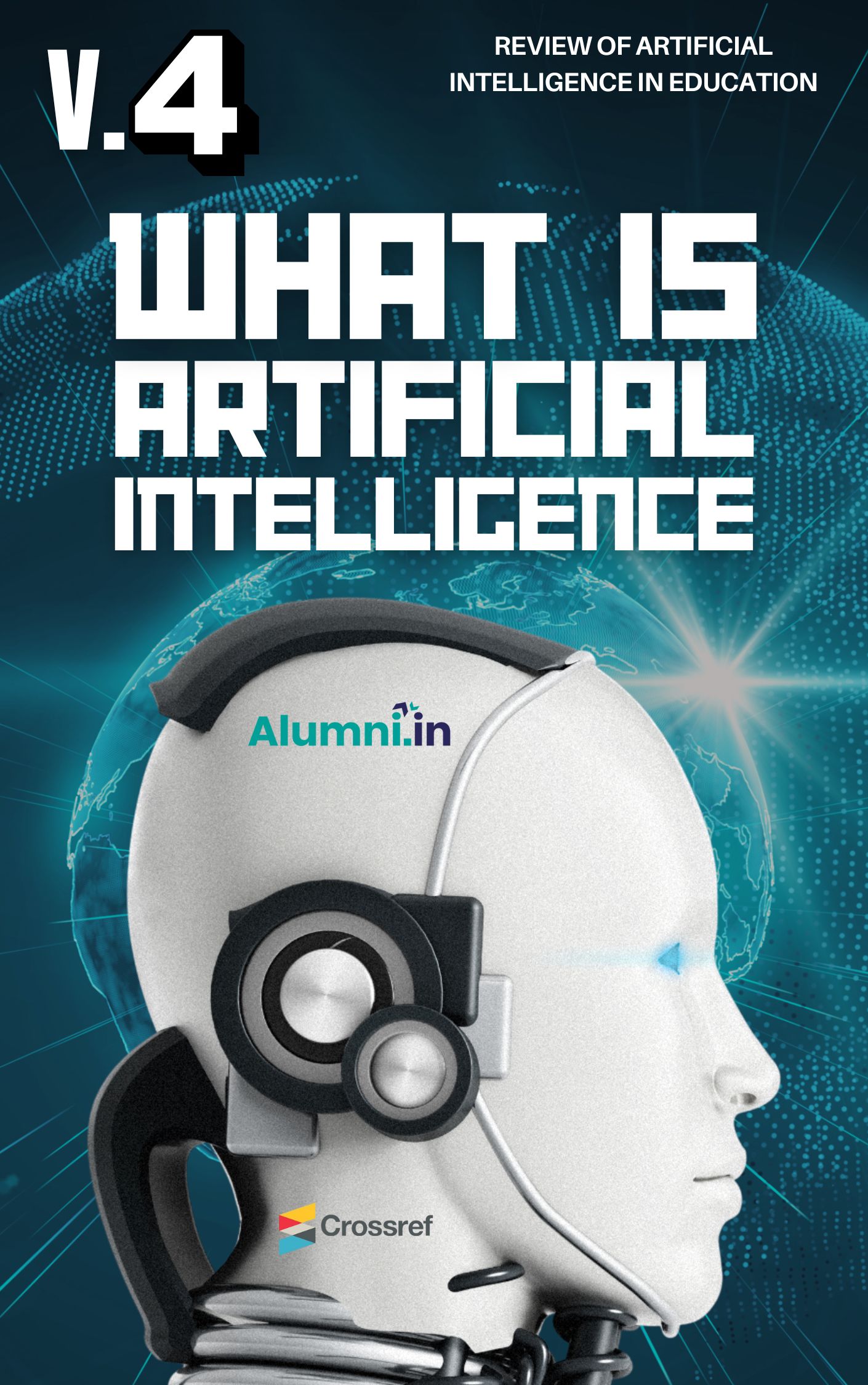Abstract
Purpose: This study addresses the application of artificial intelligence in the business context and evaluates how the implementation process is, with the aim of improving the efficiency of the organization, by researching the historical basis of AI, the analysis of AI in the current business context and the socialization between the members of the organization.
Results: The company that is the subject of the study is a marketing and technology platform development agency that is going through the process of internalizing the tools in its daily life. Investigating the relationship between the application of AI and team efficiency, as well as the company's capacity for evolution.
Method: The work was based on qualitative research with a sample of 131 people and for a group of 5 interviewees, taking into account their understanding of and experience with the tools.
Conclusions: The work highlights artificial intelligence as a structure that contributes to the evolution of individuals and organizations, while at the same time discussing how it will be implemented, its applicability and the behaviour of society in the face of possible changes.
References
Alves, A., Barbieux, D., Reichert, F., Tello-Gamarra, J., & Zawislak, P. (2017). Innovation and dynamic capabilities of the firm: Defining an assessment model. RAE-Revista de Administração de Empresas, 57(3), p. 232-244.
Beal, A. (2011). Gestão estratégica da informação: como transformar a informação e a tecnologia da informação em fatores de crescimento e de alto desempenho nas organizações. 5. reimpr. São Paulo: Atlas.
Bittencourt, G. (2006). Inteligência artificial: ferramentas e teorias. 3. ed. rev. Florianópolis: Ed. da UFSC, 2006.
Bossaerts, P., & Murawski, C. (2017). Computational Complexity and Human Decision-Making. Trends in Cognitive Sciences, 21(12), p. 917–929.
Costa, E., & Simões, A. (2008) Inteligência artificial: fundamentos e aplicações. 2. ed. rev. e aum. Lisboa: FCA.
Chakraborty, Biplab. (2017). Artificial Intelligence (AI): Will it help or hurt mankind? 6 ago. 2017. Disponível em: <https://www.linkedin.com/pulse/artificial-intelligence-aihelp-hurt-mankind-biplab-chakraborty?trk= _feed%3D>. Acesso em: 10 set. 2023.
Fernandes, A. M. da R. (2005). Inteligência artificial: noções gerais. 3. imp. Florianópolis: Visual Books.
Fleury, M. T. L. F., & Oliveira Jr., M. De M. (2010). Gestão estratégica do conhecimento: integrando aprendizagem, conhecimento e competências. 1. ed. São Paulo: Atlas.
Gil, A. C. (1999). Métodos e técnicas de pesquisa social. 5. ed. São Paulo: Atlas.
Kotler, P., Kartajaya, H., & Setiawan, I. (2021). Marketing 5.0: tecnologia para a humanidade. Tradução: André Fontenelle. 1. ed. Rio de Janeiro: Sextante.
Lakatos, E. M., & Marconi, M. de A. (2009). Fundamentos de metodologia científica. 6. ed. São Paulo: Atlas, 2009.
Lakatos, E. M., & Marconi, M. de A. (2011). Metodologia científica. 6. ed. São Paulo: Atlas.
Las Casas, A. L. (2015). Administração de Marketing: conceitos, planejamento e aplicações à realidade brasileira. 1. ed. São Paulo: Atlas.
Lee, T. K., Cho, J. H., Kwon, D. S., & Sohn, S. Y. (2018). Global stock market investment strategies based on financial network indicators using machine learning techniques. Expert Systems with Applications, vol. 117 (1), pp. 228-242.
Lee, D., & Yoon, S. N. (2021). Application of Artificial Intelligence-Based Technologies in the Healthcare Industry: Opportunities and Challenges. International Journal of Environmental Research and Public Health, 18, 271. https://doi.org/10.3390/ijerph18010271
Lee, J., Suh, T., Roy, D., & Baucus, M. (2019). Emerging Technology and Business Model Innovation: The Case of Artificial Intelligence. Journal of Open Innovation: Technology, Market, and Complexity, 5(3):44. https://doi.org/10.3390/joitmc5030044
Mccapra, A. (2017). Conservation in the age of the robot. Journal of the Institute of Conservation, 40 (2), 190-197.
Morgan, G. (2011). Imagens da organização. Tradução: Cecília Whitaker Bergamini. 1. ed. São Paulo: Atlas.
Oliveira, V. (2018). Inteligência Artificial - Como Ampliar sua Adoção. Revista Inteligência Competitiva, 8(3), 111–116. https://doi.org/10.24883/IberoamericanIC.v8i3.310
Pavan, C. D., Faoro, R. R., Matte, J., Miri, D. H., Welchen, V., Chais, C., Ganzer, P. P., & Olea, P. M. (2020). Satisfação na Adoção de Tecnologias a partir da Usabilidade do Sistema e da Cultura Organizacional. Revista Inteligência Competitiva, 10(2), 22–39. https://doi.org/10.24883/IberoamericanIC.v10i2.363
Pires, F., Barbosa, J., & Leitao, P. (2018). Quo Vadis Industry 4.0: An Overview Based on Scientific Publications Analytics. In: IEEE 27th International Symposium on Industrial Electronics (ISIE).
Russel, S., & Norvig, P. (2004). Inteligência artificial. Tradução: PubliCare Consultoria. 7. reimpr. Rio de Janeiro: Elsevier.
Russel, S., & Norving, P. (2014). Artificial Intelligence: a modern approach. 3.ed. Harlow (UK): Pearson Education Limited.
Sacks, R., Girolami, M., & Brilakis, I. (2020). Building Information Modelling, Artificial Intelligence and Construction Tech. Developments in the Built Environment, vol. 4, 100011, https://doi.org/10.1016/j.dibe.2020.100011.
Schein, E. H. (2001). Guia de sobrevivência da cultura corporativa. Tradução: Monica Braga. Rio de Janeiro: José Olympio.
Segura, M. (2018). Inteligência Artificial Aplicada a Negócios. Revista Inteligência Competitiva, 8(3), 101–110. https://doi.org/10.24883/IberoamericanIC.v8i3.308
Semmler, S, & Rose, Z. (2017). Artificial Intelligence Application Today and Implications Tomorrow. Duke Law and Technology Review, 16 (1), p. 85-99.
Simões-Marques, M., & Figueira, J. R. (2018). How Can AI Help Reduce the Burden of Disaster Management Decision-Making? Advances in Human Factors and Systems Interaction, 122–133.
Silva, A. de O., & Janes, D. dos S. (2023). Challenges and Opportunities of Artificial Intelligence in Education in A Global Context. Review of Artificial Intelligence in Education, 4(00), e01. https://doi.org/10.37497/rev.artif.intell.education.v4i00.1
Srivastava, S. K. (2018). Artificial Intelligence: Way Forward For India. Journal of Information Systems and Technology Management – JISTEM, vol. 15, e201815004.
Turban, E., Rainer, K. R., & Potter, R. E. (2005). Administração de tecnologia da informação: teoria e prática. 8 reimpr. Rio de Janeiro: Elsevier, 2005.
Zhang, J., Gu, Z., Jang, J., Wu, H., Stoecklin, M. P., Huang, H., & Molloy, I. (2018). Protecting Intellectual Property of Deep Neural Networks with Watermarking. In: ASIACCS - Proceedings of the 2018 on Asia Conference on Computer and Communications Security. Doi: https://doi.org/10.1145/3196494.3196550.
Walton, R. E. (1993). Tecnologia de informação: o uso de TI pelas empresas que obtêm vantagem competitiva. Tradução: Edson Luiz Riccio. São Paulo: Atlas.

This work is licensed under a Creative Commons Attribution 4.0 International License.
Copyright (c) 2023 João Joska Junior, Werner José Bertoldi, Ruan Carlos dos Santos, Rodrigo Fernando Belli






